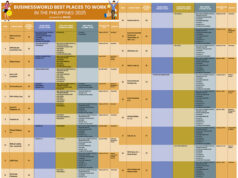In a bid to enhance the quality of and increase access to education in the Philippines, the Department of Education (DepEd) and the Commission on Higher Education (CHEd) — agencies tasked with the formulation and implementation of plans and policies relating to basic and higher education — have created a number of programs over the years.
Arguably the most significant reform DepEd has implemented this decade is the K to 12 program, which has extended the duration of basic education in the country.
“The Philippines is the last country in Asia and one of only three countries worldwide with a 10-year pre-university cycle (Angola and Djibouti are the other two),” the department says.
“A 12-year program is found to be the best period for learning under basic education. It is also the recognized standard for students and professionals globally,” it adds.
Now there’s senior high school (SHS), which consists of two grade levels, 11 and 12. It covers four tracks. One is the Academic Track, and it has four specific strands, namely accountancy, business and management (ABM); science, technology, engineering and mathematics (STEM); humanities and social science (HUMSS); and general academic (GA).
The second is the “Technical-Vocational-Livelihood” track. Like the first track, it has four strands: agri-fishery arts; home economics; information and communications technology; and industrial arts.
The third and fourth tracks are “Arts and Design” and “Sports.”
“SHS Students may pick a track based on how he or she will want to proceed after high school graduation,” DepEd says.
Among the senior high school core curriculum subjects are the following: general math; oral communication; media and information literacy; introduction to the philosophy of the human person; understanding culture, society and politics; and disaster readiness and risk reduction.
“Senior High School ‘completes’ basic education by making sure that the high school graduate is equipped for work, entrepreneurship, or higher education. This is a step up from the 10-year cycle where high school graduates still need further education (and expenses) to be ready for the world,” DepEd says.
In addition, the department says that while SHS may not guarantee that students who graduated from it will be employed, it offers several opportunities, including applying for TESDA Certificates of Competency and National Certificates.
The department has also been running an Alternative Learning System (ALS), which is “a parallel learning system in the Philippines that provides a practical option to the existing formal instruction.”
It aims to give Filipinos who, for reasons like destituteness, can neither attend nor finish school a chance to complete basic education in a way that fits their distinct needs and situations.
Basic Literacy Program and Continuing Education Program are the two initiatives under ALS that DepEd implements through the Bureau of Alternative Learning System.
“Both programs are modular and flexible. This means that learning can take place anytime and anyplace, depending on the convenience and availability of the learners,” the department says.
ALS non-formal education happens not in classrooms but in community learning centers, multipurpose halls and libraries. It is conducted by so-called ALS learning facilitators such as mobile teachers, district ALS coordinators and instructional managers instead of formal school teachers. Students and facilitators make an agreement about when and where they will meet.
CHEd, meanwhile, has a project called Faculty Development Program that seeks to improve the academic qualifications of the faculty members of higher educational institutions.
“The quality of education depends largely on the qualifications and competencies of the faculty. In view of the faculty’s vital role in influencing education outcomes, the Commission on Higher Education requires that teachers at higher education level must have at least master’s degree in the fields in which they teach. The Faculty Development Program is a critical factor towards building the strong foundation of an educational system to ensure quality education,” the agency explains.
Scholarship grants are provided to full-time faculty members with at least 12 units of teaching load in a public or private higher educational institution who will pursue degrees — a master’s degree with or without thesis, a PhD — and even continuing professional education in priority fields like natural sciences, humanities and communication, engineering, agriculture and marine sciences, and health and related programs.
CHEd has also implemented a Center of Excellence program. In Section 8 of Republic Act No. 7722, it is stated that the commission has this particular power and function: “identify, support and develop potential centers of excellence in program areas needed for the development of world-class scholarship, nation building and national development.”
“It aims to sustain/develop excellence of higher education institutions (HEIs) by enhancing their teaching, research and service programs to further nation building and national development,” CHEd says of the program.
The agency also runs a Center of Development program. It defines a center of development as “a department within a higher education institution which demonstrates the potential to become a Center of Excellence in the future.”



